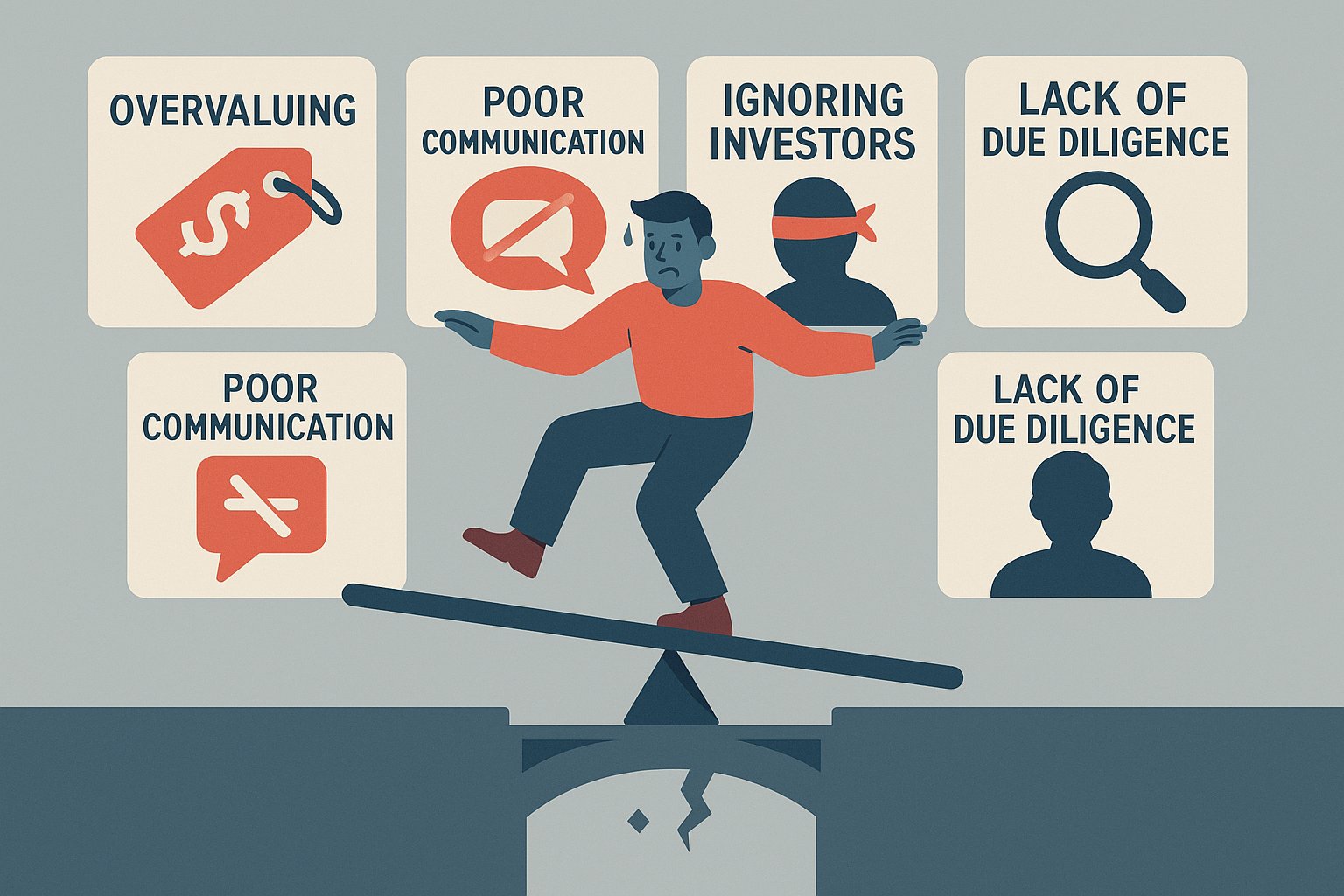The Power of a Well-Structured Fundraising Team
Raising capital is as much about people as it is about products, markets, or pitch decks. Savvy investors look beyond metrics and business models; they invest in teams capable of executing a vision, adapting to challenges, and building sustainable enterprises. A solo founder, no matter how visionary, risks investor skepticism if the company lacks depth in areas like finance, operations, technology, and go-to-market strategy. Conversely, a well-structured team demonstrates that responsibilities are delegated, talents are leveraged, and execution risks are mitigated. By strategically organizing roles, reporting lines, and advisory relationships, founders can transform fundraising from a hurdle into an opportunity to showcase organizational strength and leadership maturity.
In this guide, we will explore how to craft an organizational structure optimized for fundraising success. We’ll examine the critical leadership positions investors expect to see, how to align your team’s composition with your capital needs and growth stage, and when to introduce external advisors or board members. We will dive into practical strategies for balancing internal roles with outsourced expertise, fostering cross-functional collaboration, and presenting your team narrative in investor materials. Ultimately, structuring your team effectively not only eases the capital-raising process but also lays the foundation for scalable growth and operational excellence.
Defining Your Fundraising Objectives and Team Needs
Before assembling or reorganizing your team, you must clarify the purpose and scope of your fundraising round. Are you seeking a seed round to build a minimum viable product, a Series A to scale customer acquisition, or growth equity to expand into new markets? Each stage demands different expertise: early rounds require technical and product leadership to demonstrate feasibility, while later rounds emphasize marketing, sales, and financial governance. By articulating your funding objectives—such as runway extension, hiring key talent, or international expansion—you can map those goals onto the roles and skill sets needed to achieve them. This alignment ensures that investor conversations remain clear: “We need $X to build feature Y with this team,” instead of “We need funds, trust us.”
Core Leadership Roles for Fundraising Credibility
Investors scrutinize leadership teams for complementary expertise and track records. While every startup’s team composition is unique, certain roles are nearly universal in their importance to fundraising:
-
Chief Executive Officer (CEO): The face of the company, responsible for vision, fundraising, and high-level strategy.
-
Chief Financial Officer (CFO) or Finance Lead: Accountable for financial modeling, budget management, and investor reporting—critical for due diligence.
-
Chief Technology Officer (CTO) or Head of Engineering: Provides technical credibility, articulates product roadmaps, and manages development timelines.
-
Chief Operating Officer (COO) or Operations Lead: Ensures that processes scale, from customer support workflows to fulfillment logistics.
-
Head of Sales and Marketing: Demonstrates go-to-market strategy, user acquisition plans, and channel partnerships.
Each of these core roles should be filled by individuals who can confidently engage investors on their domains, answer scrutiny about metrics or technology, and translate high-level strategy into operational plans.
Leveraging Advisory Boards and External Experts
No startup has room to hire senior-level talent for every specialty, especially in early stages. Here, advisory boards and part-time experts can plug gaps and bolster credibility. A carefully selected advisory board—comprising industry veterans, domain-specific experts, or seasoned operators—signals to investors that your team has access to deep networks and knowledge. Advisors can review your pitch materials, introduce you to potential investors, and validate your strategic assumptions. To maximize impact, define clear scopes for each advisor—whether it’s customer acquisition, regulatory compliance, or supply chain optimization—and acknowledge their contributions in investor decks and due diligence packets.
Building Cross-Functional Collaboration
Investors prize teams that operate seamlessly across functions. Product development should integrate customer feedback loops from sales and support; finance projections must reflect marketing’s channel economics; engineering timelines should account for operational constraints. Structuring your team to break down silos—through regular cross-functional meetings, shared OKRs, or integrated project management tools—demonstrates organizational maturity. Highlighting such collaboration in investor conversations shows that your team can execute on complex timelines and adapt swiftly, reducing perceived execution risk.
Aligning Headcount Growth with Funding Milestones
Investors want to see that you can translate capital into progress efficiently. Instead of presenting a static org chart, outline a headcount growth plan tied to fundraising milestones: hiring a senior data scientist upon closing the seed round to accelerate product enhancements, or onboarding a regional VP of Sales when Series A funds enable market expansion. This phased approach reassures investors that you are not overhiring prematurely—preserving runway—and that each new hire has a clear, value-driving mandate. Embedding hiring plans within your financial model and pitch deck underscores your ability to steward investor capital responsibly.
Integrating Fundraising Responsibilities Across Your Team
While CEOs typically lead fundraising, preparing a cohesive team narrative requires involvement from multiple functions. Finance leads must craft robust financial models, engineering heads prepare technical due diligence materials, and sales leads assemble customer case studies and pipeline forecasts. By assigning fundraising responsibilities—such as data room management, investor outreach coordination, or pitch-deck refinement—to specific team members, you distribute workload, ensure continuity, and accelerate the fundraising timeline. A collaborative fundraising war room, where each stakeholder tracks progress against investor meetings and due diligence requests, showcases accountability and team cohesion.
Balancing Internal Roles with Strategic Outsourcing
Early-stage startups benefit from lean internal teams but may require external expertise in areas like legal compliance, financial audits, or public relations. Outsourcing these functions to specialized firms or consultants can deliver high-quality outputs without the full-time salary burden. For example, engaging a securities attorney to structure your SAFE rounds or a niche PR agency to amplify your funding announcement can strengthen investor confidence. The key is to maintain clear accountability: designate an internal point person to coordinate with each outsourced partner, ensuring that deliverables meet your timeline and strategic objectives.
Storytelling Through Team Narratives
Investors invest in people as much as ideas. Crafting a compelling team narrative—emphasizing complementary backgrounds, shared vision, and prior successes—can differentiate your pitch. Highlight founders’ domain expertise, such as a CTO with deep technical patents or a CEO who previously scaled a similar venture. Share team anecdotes that illustrate resilience and collaboration, like navigating an unexpected product pivot or overcoming supply chain disruptions. Humanizing data with personal stories creates emotional resonance and helps investors picture your team overcoming challenges ahead.
Preparing for Investor Due Diligence
Once initial interest is secured, investors will probe your team’s credentials through references, background checks, and detailed interviews. Anticipate this scrutiny by maintaining an up-to-date data room containing resumes, organizational charts, role descriptions, and performance metrics. Encourage each team member to prepare succinct talking points on their achievements and contributions. Rehearsing mock due-diligence calls helps the team present a unified, confident front. Demonstrating readiness for rigorous vetting reassures investors that your team operates with professional standards and transparency.
Governance Structures and Board Readiness
As your funding rounds progress, establishing formal governance structures becomes crucial. Investors expect clear reporting lines, defined decision-making authorities, and robust oversight mechanisms. Transitioning from informal weekly check-ins to scheduled board meetings with documented minutes, KPIs, and action items signals organizational discipline. Inviting key advisors or lead investors to join your board or board observer roles deepens engagement and aligns incentives. Well-structured governance lays the groundwork for scaling, regulatory compliance, and potential exit events.
Cultivating a Culture Aligned with Investor Expectations
Investors look for teams exhibiting a growth mindset, data-driven decision making, and customer obsession. Cultivating these cultural traits internally—through shared OKRs, transparent metrics dashboards, and cross-functional learning sessions—reinforces the behaviors investors value. Recognizing and rewarding team members who exemplify these qualities fosters a high-performance environment. During fundraising conversations, sharing examples of cultural rituals, such as weekly metrics reviews or customer-centric hackathons, illustrates that your team lives the principles that drive sustainable growth.
Scaling Leadership as You Grow
As startups evolve from scrappy early stages to growth engines, their leadership needs transform. Founders who once managed daily operations must delegate to professional executives—CEOs hire COOs, technical leads bring in VP-level engineering managers, and growth heads recruit specialized channel directors. Planning this leadership evolution in tandem with fundraising prepares the organization for rapid scale. Presenting a roadmap for leadership hires—complete with timelines, role specifications, and recruitment criteria—demonstrates to investors that you have anticipated the complexities of scaling and are ready to build a world-class executive team.
Measuring Team Effectiveness and Adjusting Course
Investors expect evidence of continuous improvement. Implementing regular team health checks—such as engagement surveys, performance reviews, and retrospectives—provides data on organizational strengths and bottlenecks. When issues surface, adjust structures: create new cross-functional pods, refine reporting lines, or reallocate resources to high-impact functions. Documenting these adjustments and their positive outcomes showcases leadership agility and a commitment to operational excellence. Investors recognize teams that iterate not just on products but on their own processes, as this adaptability often correlates with long-term success.
Case Studies: Teams That Nailed Fundraising Structures
Consider a fintech startup that raised $20 million Series A by centering its pitch on a triad of leadership: its CEO’s banking-industry pedigree, its CFO’s track record of public-company audits, and its head of product’s deep AI expertise. By showcasing this balanced leadership and demonstrating how each role dovetailed into their growth roadmap, the startup attracted institutional venture firms confident in the team’s collective skills. In contrast, another healthtech company struggled to close its seed round until it brought on a seasoned COO who streamlined clinical trials and regulatory pathways, instantly bolstering investor confidence. These examples underscore how strategic team structuring can be the linchpin between stalled fundraising and a successful close.
Structuring for Sustainable Fundraising and Growth
Fundraising is more than securing capital; it is a proving ground for your team’s capability to execute vision at scale. By defining clear objectives, filling core leadership roles, leveraging advisors, fostering cross-functional collaboration, and planning headcount growth against milestones, founders can craft an organizational structure that resonates with investors. Balancing internal hires with strategic outsourcing, narrating your team’s story authentically, and preparing governance frameworks for investor scrutiny further solidify your credibility. As you evolve, continuously measure team effectiveness, refine structures, and scale leadership in alignment with your business trajectory. In doing so, you transform fundraising from a transactional necessity into a powerful catalyst for building a resilient, high-caliber organization poised for long-term success.




